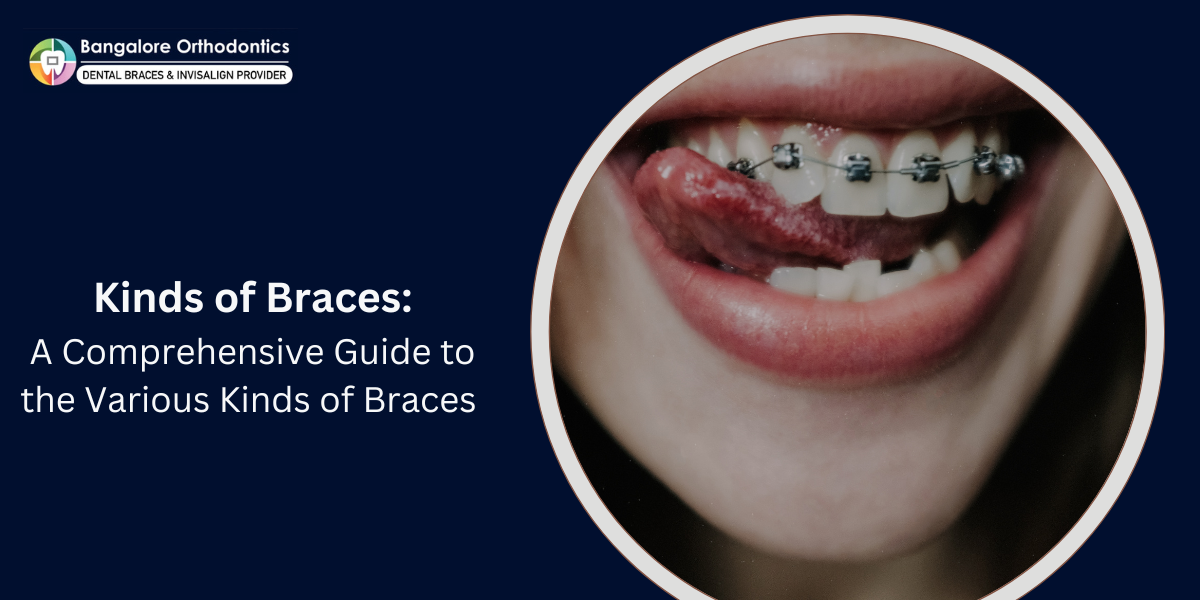Braces are an essential orthodontic treatment for aligning teeth and improving dental health. Over the years, braces have evolved from bulky, noticeable designs to more discreet and comfortable options. Today, patients have several choices, each with advantages depending on aesthetics, comfort, and treatment time. In this comprehensive guide, we will help you understand the different types of braces available and their unique benefits.
1. Standard Steel Braces
Standard steel or traditional metal braces are the most common and reliable type. Made of high-quality stainless steel, they consist of metal brackets and wires attached to the teeth. These braces are often considered the most efficient at addressing various orthodontic issues, from simple alignment problems to more severe cases like overcrowding and bite irregularities.
Advantages:
- Durable and strong: Steel braces are highly durable and can withstand the forces required for teeth alignment.
- Effective for complex cases: These braces are often the go-to option for severe orthodontic cases.
- Cost-effective: Steel braces tend to be one of the more affordable options compared to others.
Drawbacks:
- Visibility: One of the biggest drawbacks is their noticeable appearance, which can make some patients feel self-conscious.

2. Mini Steel Braces
Mini steel braces are a variation of traditional metal braces but are smaller in size. Despite being more discreet than standard braces, they offer the same level of effectiveness and durability. The miniaturized brackets are less obtrusive, making them a more aesthetic choice for patients who prefer metal braces but want a less visible option.
Advantages:
- Less noticeable: While they are still metal braces, the smaller size makes them less visible.
- Comfort: Mini braces can sometimes offer more comfort, as their smaller size reduces the likelihood of irritation on the lips and gums.
- Effective for a range of issues: Like standard steel braces, mini braces are versatile and can treat various orthodontic problems.
Drawbacks:
- Still metal braces: Though less visible, mini steel braces are still more noticeable than other options like ceramic braces.
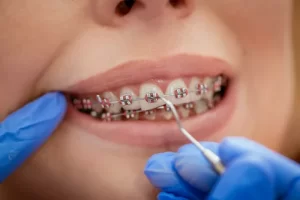
3. Gold Braces
Gold braces function similarly to traditional steel braces but with a luxurious twist. They are coated with 24-karat gold, offering patients a stylish, personalized option while retaining the efficiency of metal braces.
Advantages:
- Aesthetic appeal: The gold coating adds a touch of elegance, making them a fashionable option for those who prefer a flashier look.
- Durable: Gold braces are just as durable and effective as standard steel braces.
- Hypoallergenic: For patients allergic to nickel, which is present in stainless steel, gold braces offer an allergy-free alternative.
Drawbacks:
- Cost: Gold braces are more expensive than standard steel braces due to the gold coating.
- Visibility: Despite the gold aesthetic, these braces are still visible metal brackets, which may not suit everyone.
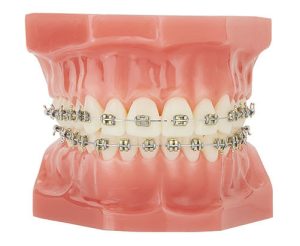
4. Standard Ceramic Braces
Ceramic braces offer a more discreet option for those concerned with the aesthetics of traditional braces. Made of clear or tooth-coloured materials, ceramic braces blend in with the natural colour of your teeth and make them less noticeable.
Advantages:
- Discreet: Ceramic braces are much less visible than metal braces, making them a popular choice for teenagers and adults.
- Effective: While they are not as strong as metal braces, ceramic braces still treat many orthodontic issues effectively.
Drawbacks:
- More fragile: Ceramic braces can be more brittle than metal braces, requiring extra care.
- Staining: The ligatures (bands that hold the wires) in ceramic braces can stain over time if not cleaned properly.
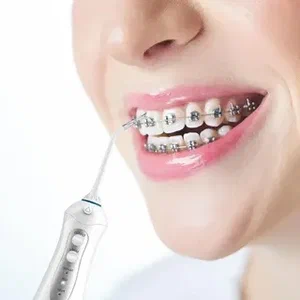
5. Coloured Ceramic Braces
Coloured ceramic braces are similar to standard ceramic braces but offer an extra level of personalization. Patients can choose from a variety of colours for the brackets or ligatures, adding a fun and vibrant twist to their treatment.
Advantages:
- Customizable: These braces allow patients to express their personality by selecting their favourite colours.
- Less visible brackets: The brackets are still ceramic and blend with the teeth, offering a balance of aesthetics and customization.
Drawbacks:
- Potential staining: Like standard ceramic braces, the ligatures or coloured elements may stain over time if not properly maintained.
- More visible than clear options: Although the brackets blend in with the teeth, the coloured ligatures can make the braces more noticeable than fully clear options.
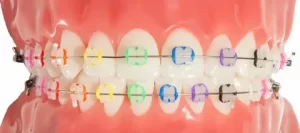
6. Damon Braces
Damon braces are self-ligating braces that use a unique slide mechanism to connect archwires to brackets, eliminating the need for elastics. This system allows teeth to move more freely and with less friction, resulting in potentially faster treatment times.
Advantages:
- Faster treatment: Damon braces may shorten treatment times compared to traditional braces due to their innovative design.
- Less discomfort: The lack of elastics reduces friction and pressure on the teeth, which can make treatment more comfortable.
- Easier cleaning: Without elastics, damon braces are easier to clean and maintain, which reduces the risk of plaque buildup.
Drawbacks:
- Cost: Damon braces are usually more expensive than traditional braces.
- Aesthetic: Although they are more discreet than traditional steel braces, they are still visible, especially in the case of metal damon braces (clear damon braces are also available).
7. Incognito Hidden Braces
Incognito hidden braces are an excellent option for patients who prioritize discretion above all else. These braces are placed on the back (lingual) side of the teeth, making them virtually invisible to others. Also known as lingual braces, they are custom-made to fit the contour of each patient’s teeth.
Advantages:
- Invisible: Incognito braces are completely hidden from view since they are placed on the inside of the teeth.
- Effective for complex cases: Despite their hidden design, these braces can still treat a wide range of orthodontic issues.
- Custom-fit: Each set of Incognito braces is custom-made, ensuring a precise fit for every patient.
Drawbacks:
- Cost: Hidden braces are one of the most expensive types of braces available due to their customization and discreet nature.
- Comfort: It may take longer for patients to adjust to Incognito braces as they can cause discomfort on the tongue and speech issues at first.
Final Words
Choosing the right braces depends on various factors, including your orthodontic needs, budget, and aesthetic preferences. Whether you prefer the classic reliability of Standard Steel Braces, the personalization of Coloured Ceramic Braces, or the discretion of Incognito Hidden Braces, there’s an option to suit everyone’s needs. Consult with your orthodontist at Bangalore Orthodontics to determine the best course of treatment for your smile!

